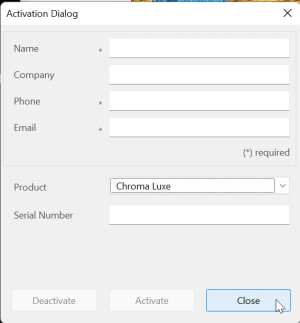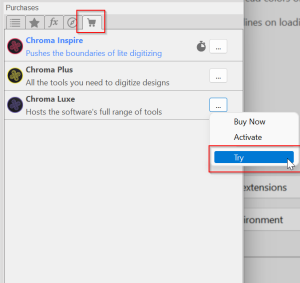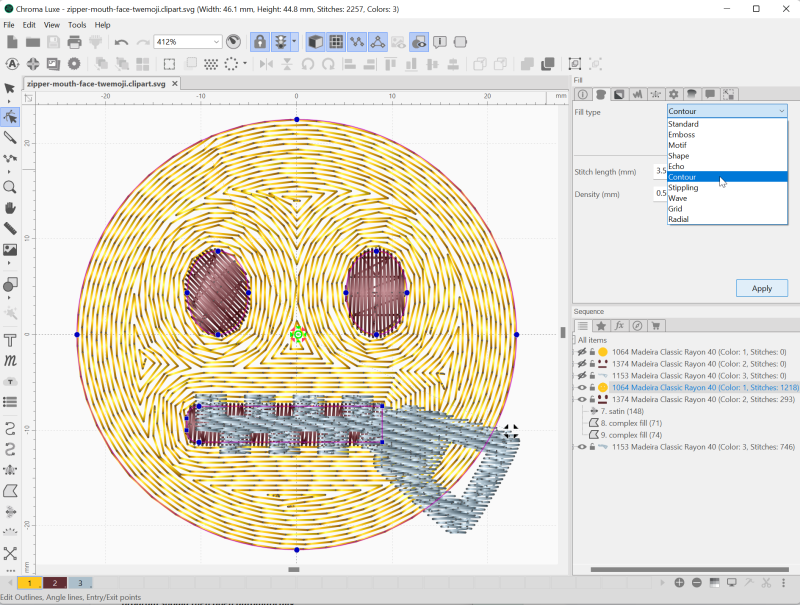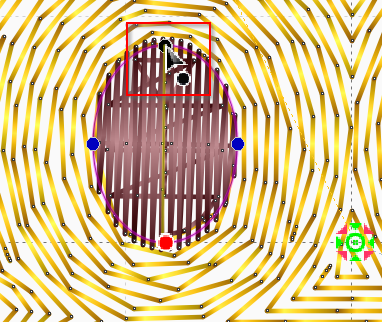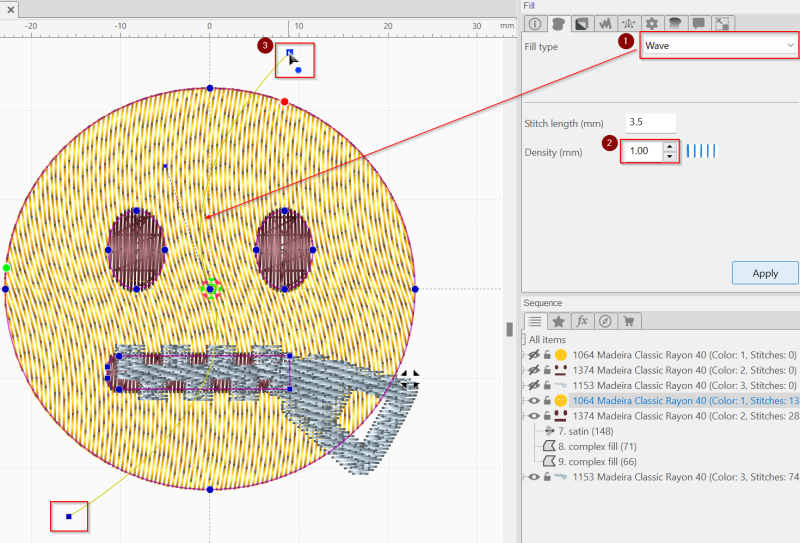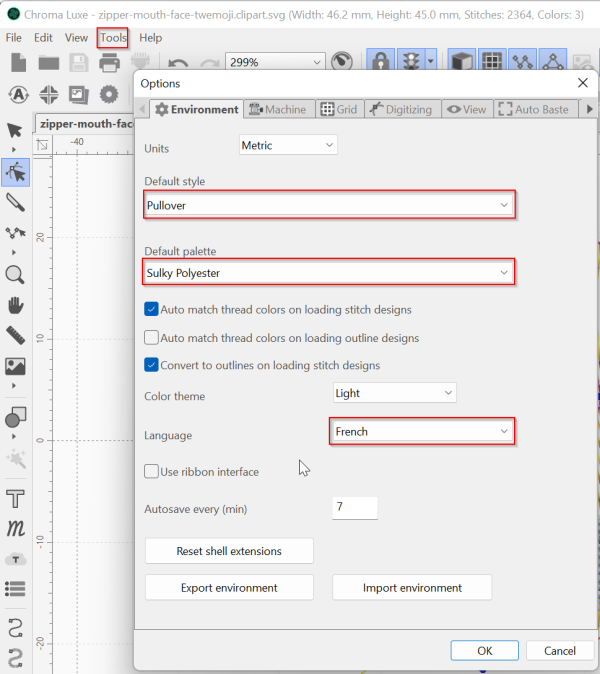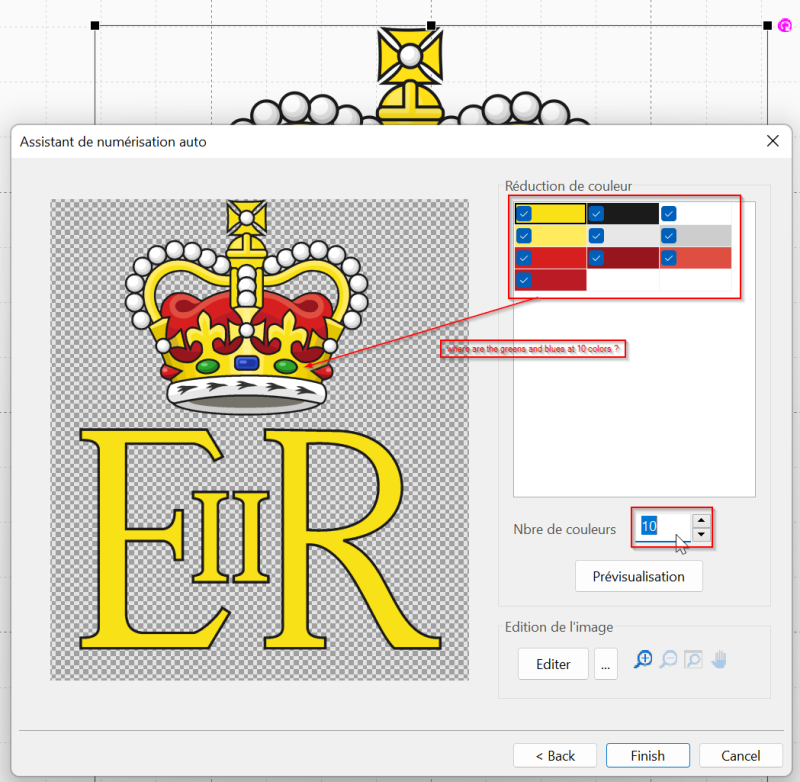Chroma Digitizing Software: Difference between revisions
| Line 7: | Line 7: | ||
Controls are color coded and it doesn't take much time to figure them out | Controls are color coded and it doesn't take much time to figure them out | ||
== Using the trial version == | == Using the trial version and getting started == | ||
I believe that you can download any version from the web site, but probably you should [https://ricoma.com/US/software/chroma register here]first. | I believe that you can download any version from the web site, but probably you should [https://ricoma.com/US/software/chroma register here]first. You will get an email with instructions. | ||
It is important to understand that you will have to answer the opening dialog in a specific way and each time you enter the software you will have to select the level you want to test. | |||
[[image: chroma-luxe-8.png|thumb|none|323x323px|Just say "close" and don't fill in the details. Chroma will open in trial mode (no saving)|alt=]]Once the system is open, you will have to select the level. Each time you switch you will loose the drawing in the workspace, '''so do switch before you anything''' ![[image: chroma-luxe-7.png|thumb|none|300x300px|Select the software level and click "trial" each time you start the software|alt=]] | |||
Enjoy .... | |||
You can either try classic digitizing by using the toolbox to the left or import a vector or raster file for auto-digitizing (see below). I usually start doing embroidery from precise vector art that I digitize automatically. Of course, the output then will require some minor adjustments and a lot of parametrizing. | |||
== Fill types == | == Fill types == | ||
| Line 41: | Line 43: | ||
=== Vector images === | === Vector images === | ||
We first tested import of SVG that went smoothly (although we did not test bad SVG code. The emoji above have been cleaned for import in Hatch and Embroidery Office. | We first tested import of SVG that went smoothly (although we did not test bad SVG code. The emoji above have been cleaned for import in Hatch and Embroidery Office. Several formats are supported. | ||
You can edit the envelope of vector objects, but not the shapes themselves (unless we mised something) | |||
=== Raster images === | === Raster images === | ||
Importing clean raster files works fine if the number of colors is small. Color reduction is not working well. We tested this with a clean drawing (actually exported from an [https://commons.wikimedia.org/wiki/Category:Royal_Cypher_of_Elizabeth_II_of_the_United_Kingdom?uselang=mn#/media/File:Royal_Cypher_of_Queen_Elizabeth_II.svg SVG file] found on Wikipedia) . In order to detect green and blue we have to select 26 colors and we didn't find any method to merge colors. Both Hatch and Stitch Era can do this. Maybe we missed the feature since there is no real manual.[[image: chroma-luxe-6.png|thumb|none|800px|Changing a direction line of a tatami]] | Importing clean raster files works fine if the number of colors is small. Color reduction is not working well. We tested this with a clean drawing (actually exported from an [https://commons.wikimedia.org/wiki/Category:Royal_Cypher_of_Elizabeth_II_of_the_United_Kingdom?uselang=mn#/media/File:Royal_Cypher_of_Queen_Elizabeth_II.svg SVG file] found on Wikipedia) . In order to detect green and blue we have to select 26 colors and we didn't find any method to merge colors. Both Hatch and Stitch Era can do this. Maybe we missed the feature since there is no real manual.[[image: chroma-luxe-6.png|thumb|none|800px|Changing a direction line of a tatami]] | ||
Revision as of 17:14, 23 September 2022
Introduction
Chroma is embroidery software from Ricoma, a company that builds good instructional multi-needle embroidery machines. According to the Chroma website (9/2022), “Chroma, Ricoma's proprietary digitizing software, is designed to allow both the novice and experienced digitizer to create even the most intricate designs with ease and speed. Become a digitizing pro in no time with an easy-to-use interface, built-in styles and customization tools!”. This is a similar positioning as Hatch Embroidery 3. It's advanced "luxe" version costs $2100 and it therefore should offer more functionality.
We had a short look at the software but didn't do any serious testing, which actually would including stitching out files and that is not possible in the trial version.
Controls are color coded and it doesn't take much time to figure them out
Using the trial version and getting started
I believe that you can download any version from the web site, but probably you should register herefirst. You will get an email with instructions.
It is important to understand that you will have to answer the opening dialog in a specific way and each time you enter the software you will have to select the level you want to test.
Once the system is open, you will have to select the level. Each time you switch you will loose the drawing in the workspace, so do switch before you anything !
Enjoy ....
You can either try classic digitizing by using the toolbox to the left or import a vector or raster file for auto-digitizing (see below). I usually start doing embroidery from precise vector art that I digitize automatically. Of course, the output then will require some minor adjustments and a lot of parametrizing.
Fill types
Chroma luxe includes the typical fill paradigms that one can find in good embroidery software. By default, larger fills are done with a tatami for which a small number of variants exist.
The next picture shows both various fill types (in the pull down menu) and a contour fill with a density of 0.5mm.
Parameters and controls
Embroidery objects have color coded controls:
- Blue to change the shape
- Red and green are the entry/exit points I believe
- Black on a satin allows moving the direction line
Wave is another line-based fill and the wave can be edited through a guideline, item (3) in the screen shot below.
Software parameters
- It does speak several languages, including French
- Default palettes can be selected (Gunold is missing, but Sulky is probably the same).
- Default textiles (that will influence density, underlay, compensation, etc) can be defined.
We have to figure out
Automatic digitizing
Chroma supports both vector and raster images.
Vector images
We first tested import of SVG that went smoothly (although we did not test bad SVG code. The emoji above have been cleaned for import in Hatch and Embroidery Office. Several formats are supported.
You can edit the envelope of vector objects, but not the shapes themselves (unless we mised something)
Raster images
Importing clean raster files works fine if the number of colors is small. Color reduction is not working well. We tested this with a clean drawing (actually exported from an SVG file found on Wikipedia) . In order to detect green and blue we have to select 26 colors and we didn't find any method to merge colors. Both Hatch and Stitch Era can do this. Maybe we missed the feature since there is no real manual.
